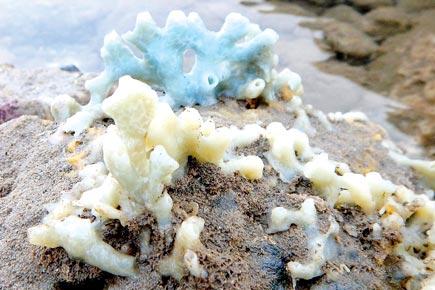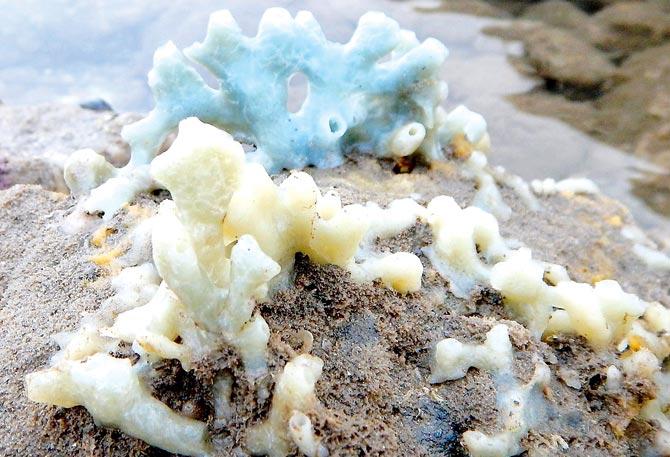Marine Drive's rocks are replete with a diversity of brightly-coloured sponges

The earliest sponge fossils date to 530 million years
 the world celebrated World Ocean Day on June 8, I was busy manoeuvring the concrete tetrapods off Marine Drive. My marine enthusiast friend Pradip Patade had decided to surprise me with a treat of marine creatures, which exist unknown to even ardent nature enthusiasts.
the world celebrated World Ocean Day on June 8, I was busy manoeuvring the concrete tetrapods off Marine Drive. My marine enthusiast friend Pradip Patade had decided to surprise me with a treat of marine creatures, which exist unknown to even ardent nature enthusiasts.
My latent amazement about all creatures marine has been forcing me to frequently visit beaches across Mumbai. While most people explore the sandy stretches for their attractive shells, crabs and birds, I am attracted to the rocky intertidal zone that are rich in marine invertebrates.
An hour-and-a-half-walk in the rocky intertidal region off Marine Drive exposed wondrous delights, especially a diversity of brightly-coloured sponges. We spotted pale cream, bright red, pastel turquoise and even green sponges, right here along the coast of our beauty-obsessed megalopolis. In the 18th century, people in Europe scrubbed their bodies with sponges that belong to Phylum Porifera.
ADVERTISEMENT

The earliest sponge fossils date to 530 million years
Arriving on the planet around 530 million years ago, sponges are one of most primitive of multi-cellular animals. They lack a defined body shape and are found fixed on rocky substrates (sessile animals). Due to their appearance of large-sized fungi, many confuse them for plants. The fluffy appearance is a result of a hollow body full of tiny pores called ostia and lack of digestive, circulatory or nervous systems. There are mouth-like openings (osculum) at the top, while the base is fixed to some rock.
As the water can easily flow in and out, it brings with it fresh food and oxygen, and removes wastes. Sponges prefer clear water to avoid blocking of their pores with sediments. Although adult sponges are fundamentally sessile (fixed) animals, their juveniles drift or swim freely. Sponges also produce toxins that prevent competition for space from other sessile organisms.
Sponges are hermaphrodites and most species reproduce sexually. After emergence, the sponge larva floats around in the water for a few days and then sticks to a solid base to grow into an adult sponge. Strong current breaks many fragments of these sponges but they have the ability to regenerate, a property called totipotency.
Earlier, soft sponges had many purposes, including padding for helmets, portable drinking utensils and municipal water filters. Until the invention of synthetic sponges in 1937, they were used as cleaning tools, to apply paints, to create ceramic glazes and discreet contraceptives. In the wild too, dolphins use sponges as tools while foraging, while turtles and fish feed feed on them. Some sponges show symbiotic relation with bacteria, which have active molecules of biomedical value.
Our careless attitude towards our coastline may not only endanger these amazing sponges but also destroy our historical beauty options and a potential medicinal treasure.
Write in to Anand at sproutsenvttrust@gmail.com
 Subscribe today by clicking the link and stay updated with the latest news!" Click here!
Subscribe today by clicking the link and stay updated with the latest news!" Click here!







